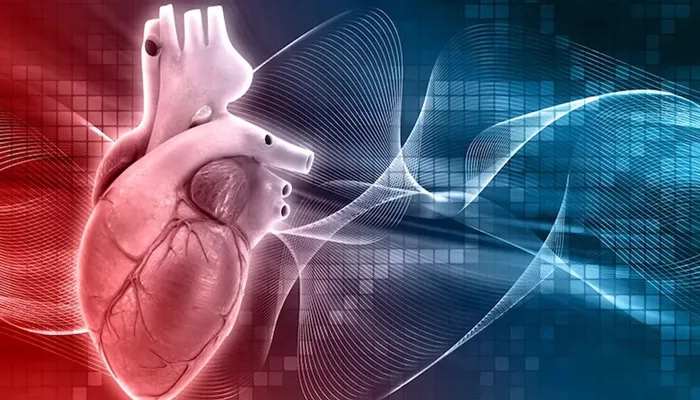Arrhythmia is a condition characterized by an irregular heartbeat, where the heart may beat too fast (tachycardia), too slow (bradycardia), or in an erratic manner. The heart’s rhythm is controlled by electrical signals that coordinate the heart’s chambers to pump blood efficiently. When these signals are disrupted, an arrhythmia occurs, leading to a variety of sensations and symptoms that can range from barely noticeable to life-threatening.
What Does An Arrhythmia Episode Feel Like?
1. Palpitations
One of the most common sensations associated with arrhythmia is palpitations. Patients often describe this feeling as a fluttering or pounding in the chest. It can feel like the heart is skipping beats, beating too quickly, or throbbing harder than usual. These palpitations can occur sporadically or persist for longer periods, and they can be alarming even if they are benign.
2. Dizziness and Lightheadedness
Arrhythmias can disrupt the efficient flow of blood, leading to inadequate oxygen supply to the brain. This can cause dizziness or lightheadedness. In some cases, individuals may feel like they are about to faint or may experience actual fainting spells (syncope). This is particularly common in cases of bradycardia, where the heart rate is unusually slow.
3. Shortness of Breath
Another common symptom is shortness of breath. When the heart’s rhythm is irregular, it may not pump blood effectively, resulting in reduced oxygen delivery to the body. This can make breathing feel labored or insufficient, even during periods of rest or minimal exertion.
SEE ALSO: What Are The Effects of Arrhythmia on Cardiovascular Function
4. Chest Pain or Discomfort
Chest pain or discomfort is a serious symptom that can accompany arrhythmia. This pain may be sharp, stabbing, or a feeling of pressure in the chest. It can be a sign of reduced blood flow to the heart muscle, which can be dangerous if not promptly addressed.
5. Fatigue and Weakness
Chronic arrhythmias can lead to persistent fatigue and weakness. The heart’s inability to maintain a steady and efficient rhythm can leave the body feeling drained, even after minimal physical activity. This can significantly impact daily life and overall well-being.
Types of Arrhythmias And Their Specific Symptoms
1. Atrial Fibrillation (AFib)
Atrial fibrillation is one of the most common types of arrhythmia. It occurs when the upper chambers of the heart (atria) beat irregularly and out of sync with the lower chambers (ventricles).
Symptoms of AFib:
Palpitations: Rapid and irregular heartbeats.
Weakness: General fatigue and lack of energy.
Shortness of Breath: Especially during physical exertion.
Chest Pain: Possible, especially if the condition is severe.
Dizziness: Feeling faint or lightheaded.
2. Ventricular Tachycardia
Ventricular tachycardia originates in the heart’s lower chambers (ventricles) and is characterized by a fast but regular heart rate. It can be dangerous and may lead to more serious conditions like ventricular fibrillation.
Symptoms of Ventricular Tachycardia:
Palpitations: Rapid heart rate that is regular.
Dizziness: Feeling faint due to reduced blood flow.
Chest Pain: Often severe and sudden.
Shortness of Breath: Due to inefficient pumping of blood.
Loss of Consciousness: Possible if the condition persists.
3. Bradycardia
Bradycardia is a slow heart rate, typically defined as fewer than 60 beats per minute. While it can be normal for some athletes, in others it may signal a problem with the heart’s electrical system.
Symptoms of Bradycardia:
Fatigue: Extreme tiredness and lack of energy.
Dizziness: Feeling lightheaded or faint.
Shortness of Breath: Particularly during physical activity.
Chest Pain: May occur if the heart struggles to pump blood effectively.
Confusion or Memory Problems: Due to reduced blood flow to the brain.
4. Premature Ventricular Contractions (PVCs)
PVCs are extra heartbeats that begin in the ventricles. They disrupt the normal rhythm and are often felt as a skipped beat followed by a stronger-than-usual beat.
Symptoms of PVCs:
Palpitations: Feeling like the heart has skipped a beat.
Fluttering: A sensation of fluttering in the chest.
Pounding: Stronger than normal heartbeats.
Dizziness: Occasional lightheadedness.
Living with Arrhythmia: Coping Strategies
1. Monitoring and Medication
Patients with arrhythmias often need to monitor their heart rate and rhythm regularly. This can be done through devices like Holter monitors or event monitors. Medications may be prescribed to control the heart rate, prevent clot formation, or address underlying conditions.
2. Lifestyle Modifications
Adopting a heart-healthy lifestyle can help manage arrhythmias. This includes regular exercise, a balanced diet, avoiding excessive caffeine and alcohol, and managing stress. Quitting smoking is also crucial.
3. Medical Procedures
In some cases, medical procedures may be necessary. These can include catheter ablation to correct abnormal electrical pathways in the heart, or the implantation of devices like pacemakers or defibrillators to maintain a regular heartbeat.
4. Emergency Situations
Knowing when to seek emergency medical attention is vital. Symptoms like severe chest pain, shortness of breath, or loss of consciousness require immediate medical intervention.
Emotional And Psychological Impact
Living with arrhythmia can take an emotional and psychological toll.
The unpredictability of episodes can lead to anxiety and fear. It’s important for patients to seek support from healthcare providers, support groups, and mental health professionals.
1. Anxiety and Stress
The fear of experiencing an arrhythmia episode can cause significant anxiety. This stress can, in turn, exacerbate symptoms.
Techniques such as mindfulness, meditation, and counseling can be beneficial.
2. Depression
Chronic health issues like arrhythmia can lead to feelings of depression. It’s essential to address these feelings with a healthcare provider to ensure comprehensive care.
Conclusion
Arrhythmia can manifest in various ways, from mild palpitations to severe chest pain and fainting. Understanding the symptoms and seeking appropriate medical care is crucial for managing this condition. Through a combination of lifestyle changes, medication, and medical interventions, individuals with arrhythmia can lead healthy and active lives. Recognizing the emotional impact and seeking support is equally important in ensuring overall well-being. If you suspect you have an arrhythmia or experience any of the symptoms described, it’s essential to consult a healthcare professional for a thorough evaluation and appropriate treatment.

